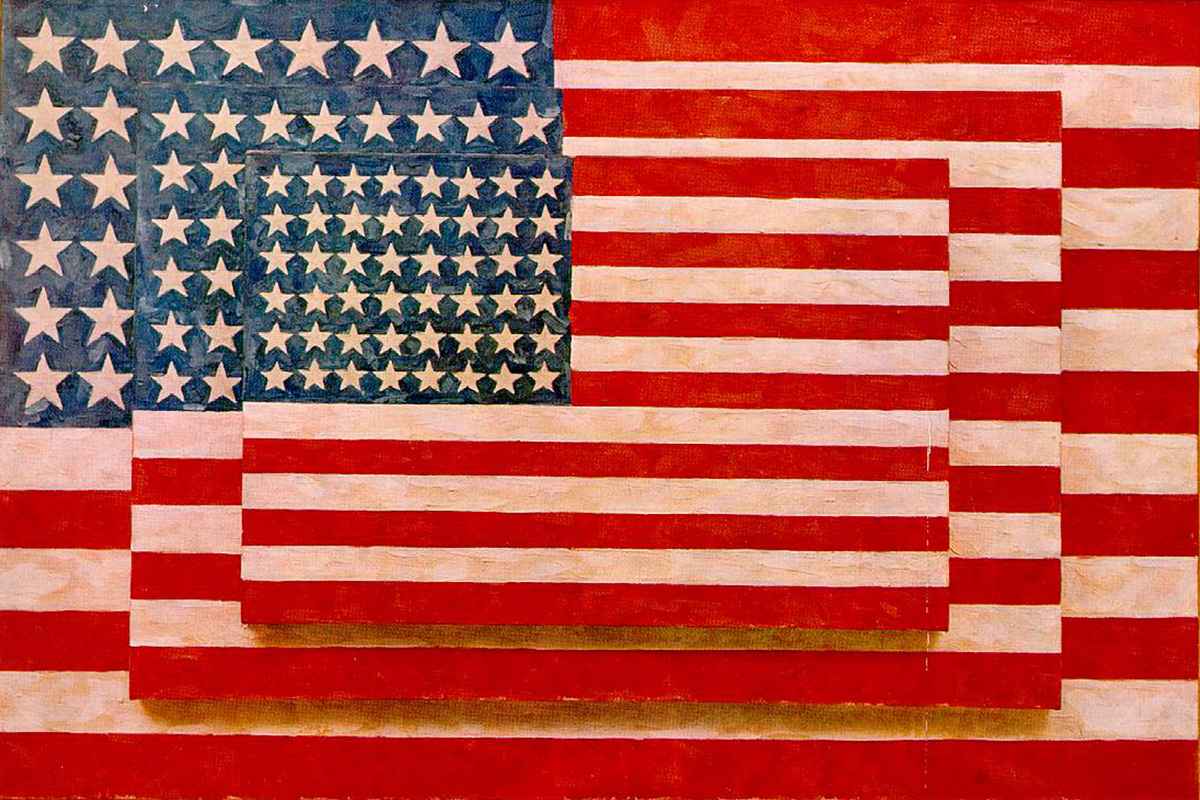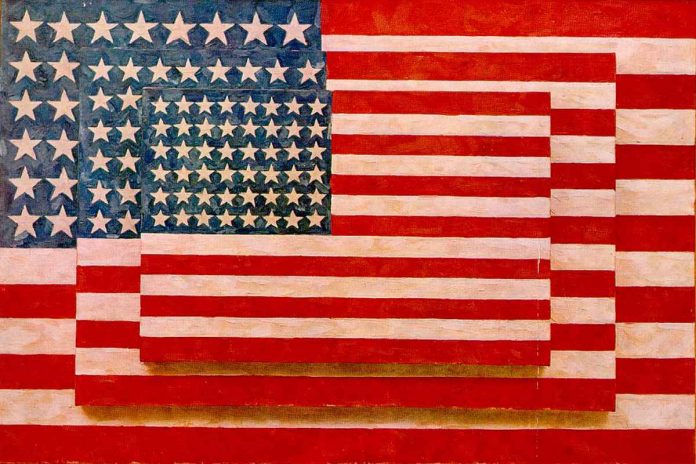It is important to note the role of art in the post-war period of American art, leaving behind a sea of brilliant works of art.
It was 1945 and World War II ended. However, after that, the Cold War broke out. The political climate was characterized by battles between the capitalist West and the communist East, creating a traumatic contradiction that is evident to this day.
Art always reacts in one way or another, so the points of view from which one could observe it was also polarized, which gave rise to a huge number of parallel streams.
Thus, we can see the most obvious difference between the tendencies towards abstraction proposed by pro-democratic American art and European post-war art, which fell lightly under the influence of figuration and realism imposed by the Soviet Union.
Meanwhile, there was everything else: pop art, which used aspects of mass culture (as opposed to abstract expressionism), Fluxus, as the anti-art nihilist movement originating from Dadaism, Art Brut or Outsider Art, if you like, new realism to France and all other forms of realism that arose in Great Britain, socialist realism in the Russian Soviet Republic, etc.
It looks like post-war dung was a very fertile ground for a start, and luckily for us, some of the most brilliant artists were eager to create new history. Let’s see which of the paintings of this era of ambivalence and post-trauma may be most appropriate for modern points of view, and make the fastest most suitable for us works of art created in our recent history, in times of crisis that we cannot fully understand, but perhaps we might compare this to our own crisis.

The dark tone characteristic of Bacon’s painting resonates is better with the war itself than with the post-war period. Although most of his significant works, written later in the 20th century, remained just as destructive and emotionally disturbing.
The motif of the pain of the crucifixion served as a symbol of death, and Bacon used allegory to make Three Studies for the figures at the base of the crucifixion. Using images devoid of religious connotations, the artist sought to simply portray human suffering.
This was not very political in itself, however, and was even frowned upon by renowned critic John Berger, who disapproved of Bacon’s art due to his alleged lack of outrage. On the other hand, Bacon himself never claimed to be a realist, and he usually put more emphasis on violence and distortion in his work as intermediaries between the viewer and the work of art.
Therefore, in the post-war setting, his art served an unforeseen purpose – Bacon’s dark emotions were completely personal and not an illustrative commentary on the war.

Pollock is maybe the most famous representative of American art. He was a master-hand of abstract art.
Dripping was a completely new art technique created by the artist.
The large canvas used for Autumn Rhythm (No. 30) lay on the floor in a horizontal position, waiting for the artist to begin the session. Pollock dripped and poured paint, moving to his own rhythm, sometimes using towels and sticks to complete the painting.

Pop art may have had the intention of challenging certain aspects of high art, but it was not even as low as Jean Dubuffet’s Art Brut. For Dubuffet, beauty was not in the standardized prototypes of popular culture, nor in the exclusiveness of abstract expression.
Much of his art was aimed at getting out of the system and ignoring anything related to “official” cultural standards, including art institutions. The thin-nosed cow was one of Dubuffet’s most significant paintings, as it depicts a familiar pet in a naive, harmless manner, ignoring any fears associated with potential criticism.
The cow with a thin nose and girly eyes looks at us when we look at her (and not at her), embodying all the freedom of outsider art.

This work is probably one of the most famous works of American art of the 20th century. Three American flags are attached to each other, painted with warm wax, and each is 25% smaller than the last.
Thus, the Three Flags is not exactly what you would call an ordinary painting, perhaps it is more of a sculpture consisting of three paintings decreasing in size. The work explores how abstraction intersects with representation – the American flag carries a lot of symbolic connotation, but in the end, it’s just stripes and stars.
Jasper Jones deliberately transcends the flag by playing with symbols that the mind already knows, which is a typical Pop Art approach. And, for reference, the artwork was acquired by the Whitney Museum for a million dollars in 1980.

Postwar art in Europe was different from American art, and in France, it was particularly authentic. New Realism was one of the movements that emerged in the 1960s.It was one of the many avant-garde trends in Europe at the time.
The new realism reflected Duchamp’s idea that art and life should be linked in such a way as to make possible a certain appropriation of reality. Because of this, one will not find two representatives of the new realism with a similar style but one will find similarities in their ideologies.
One of the brightest artists associated with this movement is Yves Klein, who was fascinated by monochrome, monotony, and practically everything that could come close to the concept of infinity. Beginning in 1956, Klein focused on only one color, which more clearly defined his position in the art world. Hence, the particular shade of blue is now known as IKB (International Klein Blue).

By the 1960s, the world seemed tired of the supernatural appearance of Abstract Expressionism, and that atmosphere made the emergence of pop art possible. The powerful new stream in American art changed the way art was perceived at the time, through the use of images from popular culture and the reconciliation of high culture with the masses.
As one of the initiators of the movement, Roy Lichtenstein became extremely popular over time. His deliberate use of imagery from comics has become one of the most engaging forms of artistic expression, largely due to the size of these artworks and the medium of manga acrylic and oil on canvas.
Of all the recognizable paintings of Liechtenstein, Whaam! probably the most popular. We strongly recommend that you read more about the meaning of the picture on Wikipedia (don’t be too shocked by the length of the article).

Wayne Thibault’s work is commonly associated with pop art, mainly due to his choice of the subject matter. However, some of his early works were created before the movement was officially established, so it can be said that Thibault had the ability to foresee what the future would look like, but he never considered himself a pop artist.
Thibault’s art identifies objects of popular culture through the unique connection between exaggerated color and monumental shadows, and the 1964 Lipstick is an example of this. He often preferred to depict food, makeup, toys, and clothing, or just things we love to buy, but he also did it the old fashioned way, contrasting the flat mechanical painting suggested by Andy Warhol. However, popular culture was a persistent motive in the post-war period of American art.

Freud made a somewhat mysterious self-portrait, looking at a mirror placed at his feet, in which he saw his reflection and a ceiling lamp. The two children that appear in the left corner of the image are Freud’s daughters, Rose and Ali Bolt.
They are depicted in a rather strange way, very small, in an arbitrary-looking position. Freud’s commentary on this was never clearly articulated. He used it to mean that everything is autobiographical and that everything is a portrait, so this painting clearly falls into this category.
Critics are sure that the painting is a reflection of Freud himself about himself as a person, artist, and father. As long as he looks at his reflection and into his eyes, he seems to be oblivious to his young children. Is this a form of self-criticism or a metaphor for how he constantly thinks about his children?

David Hockney is by far one of the most famous artists of the post-war period of American art (which does not mean that his later work is not as brilliant). Two of his paintings marked the post-war era in some way, and both will be featured in this article.
The Beverly Hills housewife portrays Betty Freeman (who was more than just a housewife, as you probably know) in the courtyard of her luxury Los Angeles apartment. The painting is an important part of his California Dreams series, which reflects a world that was new to Hockney – the world of contemporary American culture.
It depicts the good life of the American Dream, an iconic modern home furnished with designer furniture and contemporary American art.

A Bigger Splash had such a strong impact that two films were made based on it. The canvas depicts a pool that looks like it has just been jumped into. Everything is shown in a simplistic way and seems to be devoid of depth, which once again reflects the ease of ideal American life.
Neither the public nor David Hockney knows who jumped into the pool, but we do know that Hockney drew the image from the splash photo. To answer this question, the significant representative of American art said that most of the painting was spent on the splash. The splash lasted two seconds, and the building was there permanently. That’s what it is really about.
This is the history of a continuous, bitter struggle between two trends in American art – progressive, realistic, and frankly reactionary, which has reached the extreme limits of degeneration. This process was marked by the performance of remarkable masters whose work testifies to the strength of democratic and humanistic principles in all areas of American art.
However, in 20th-century American art, the tradition of the grand realistic style has not been interrupted, which has been opposed to an expanded and entrenched artistic and ideological reaction. Despite the complexity and exceptional difficulties of the struggle to establish an interest in life in art and for the true truth of life, American realism did not yield its leading role to any new hobbies.
























